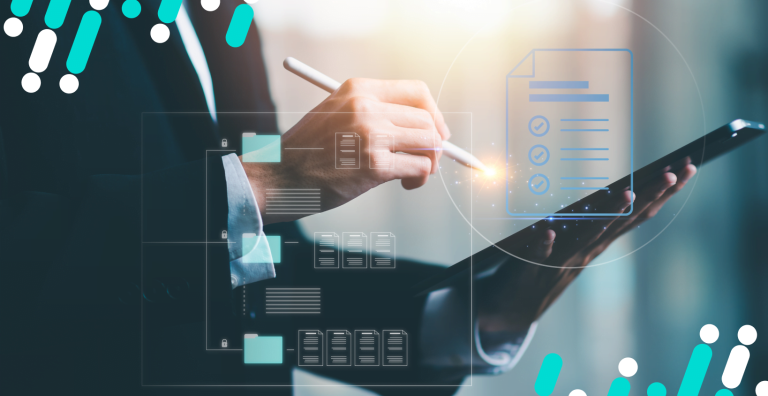The Data Dilemma
Organisations amass thousands of data points, but most of this data is only useful when represented in a way that delivers actionable insight. According to Forrester, 60-73% of all data within an enterprise goes unused for analytics. Consequently, most SMEs are losing out on very important insights that could be used to help improve their financial situation.
Now, consider the task of sorting business data assigned to a human; that means it is simply a waste of most of one’s time to get data that is of little value. Once manual input is taken out of the equation, one is free to fill in the gaps with AI and ML. These technologies have been applied in very revolutionary ways as far as businesses are concerned, and the banking and accounting industries are no exception.
How AI Can Assist in Finance
Credit Decisions
With the help of AI and ML, a bank can consider a much larger dimension of data, such as spending habits, to get a much more holistic view of the customer’s financial behaviour. This assists the bank in assessing creditworthiness with greater accuracy and offering personalised products which can best serve the needs of their customers.
By far, one of the most important features that work in favour of AI-operated algorithms for credit scores is their potential ability to take many more elements into account than traditional credit scores. Normally, these would be the aspects when judging the credit score of a business:
- Payment history and behaviour
- Debt level and utilisation ratio
- Age and size of business
- Industry and market conditions
- Financial statements and cash flow
These algorithms can offer a much more precise evaluation of an organisation’s creditworthiness, therefore allowing banks to minimise their risk and make better lending decisions.
However, AI and ML in credit decisions have their advantages, not limited to banks alone but also extending to customers. Since the evaluation of creditworthiness is closer to reality, banks can give better access to credit for customers. This implies that people who might have been denied credit based on their credit score can now get access to much-needed credit.
Risk Management in Finance
The repercussions of cyberattacks, fraud, and money laundering have been visibly seen in the financial sector. Banks must watchfully be on the lookout for detection and prevention of fraudulent activities. That’s where AI and ML help them easily. When large pools of data are analysed, they can create patterns indicating fraud in some cases, whereby the bank may take proactive action.
The algorithms of machine learning will also contribute to the banks’ ability to identify potential risks by means of analysis of historical data and future trend forecasting. In this respect, banks’ automation of risk management will save time and resources while enhancing their risk detection and management capabilities.
However, the application of AI and ML in financial risk management is not confined to banks alone. Companies in all sectors can use the above-said technologies to enhance their processes of risk management in a much more proactive manner, such that the element of surprise gets minimised and business decisions are better and wiser. For instance, a company working with sensitive customer data on a large scale can use AI and ML to realise cyber threats and prevent them, thus helping customers protect their privacy and reputation.
Customer Service
People, in these times, expect access to company helplines 24/7, and AI provides those facilities. Such technologies can help banks provide services which serve not only the customers with their financial needs but also answers to any queries that they may have. Here are the main ones you need to know about:
- Chatbots: Programs which, through AI and NLP, interpret the customer queries and respond on their own, thereby simulating human-like conversations. The applications could vary from an inquiry about any product or service to creating surveys and analysing feedback.
- Voice assistants: These are a kind of chatbot that is designed to interact with the user through speech recognition and synthesis. Capabilities include playing music, checking the weather, booking appointments, ordering food, and controlling smart devices, among others. Examples of voice assistants include Siri, Alexa, Google Assistant, and Cortana.
- Robo-advisors: chatbots that utilise algorithms and data analytics to make recommendations to their customers on all matters pertaining to investment management. In this way, they can help customers to build an appropriate portfolio that fits their goals, preferences, and risk profile. They also follow market trends and, in due order, adjust the portfolios.
By providing such services, lenders enhance their customer service and reduce their costs. Automation of services can handle a large volume of customers’ inquiries simultaneously, reducing the need for human customer service representatives. Customers enjoy speedier service and 24/7 availability; this solution builds efficiency for lenders.
What’s more, it could mean OpenAI would finally give chatbots a chance to level up and be even more useful. Closing 2022, ChatGPT became the darling of every founder, investor, or user for being a chatbot that could have meaningful and interactive conversations on any topic. OpenAI finally released the API for ChatGPT in March 2023, which allowed any person or entity willing to integrate such capabilities into their own services. It is only a question of time before the chatbots use business data to their advantage and become wiser.
Data Analytics
Finally, accountants can analyse large volumes of information using AI and ML much quicker and more accurately. For this reason, accountants need to spend far less time on data entry and more on analysing such data for insights and trends that will help in recommending better business decisions. More exciting, perhaps, is how AI and ML algorithms can identify patterns in financial data that may not always be obvious to the human eye, leading to more accurate and reliable financial reporting.
Pulse: A Solution for SMEs
One solution, leveraging intelligent automation to unlock practical banking and accounting insights for SMEs, is Pulse. From inside your accounting software and bank accounts, this innovative solution provides a comprehensive view of business finances. Pulse includes AI-generated insight reports that analyse the strengths, weaknesses, opportunities, and threats of your business by leveraging your Open Banking and Open Accounting data.
With Pulse, you can track cash flow, profitability, liquidity, and solvency through interactive dashboards and graphs. The solution identifies potential issues or risks in your business finances and recommends mitigating actions.
Easy to use, scalable, and secure: Pulse lets you get started without needing a single line of code or any technical expertise. You can even integrate Pulse seamlessly with existing systems and sources of data. Sign up for Pulse today!

















